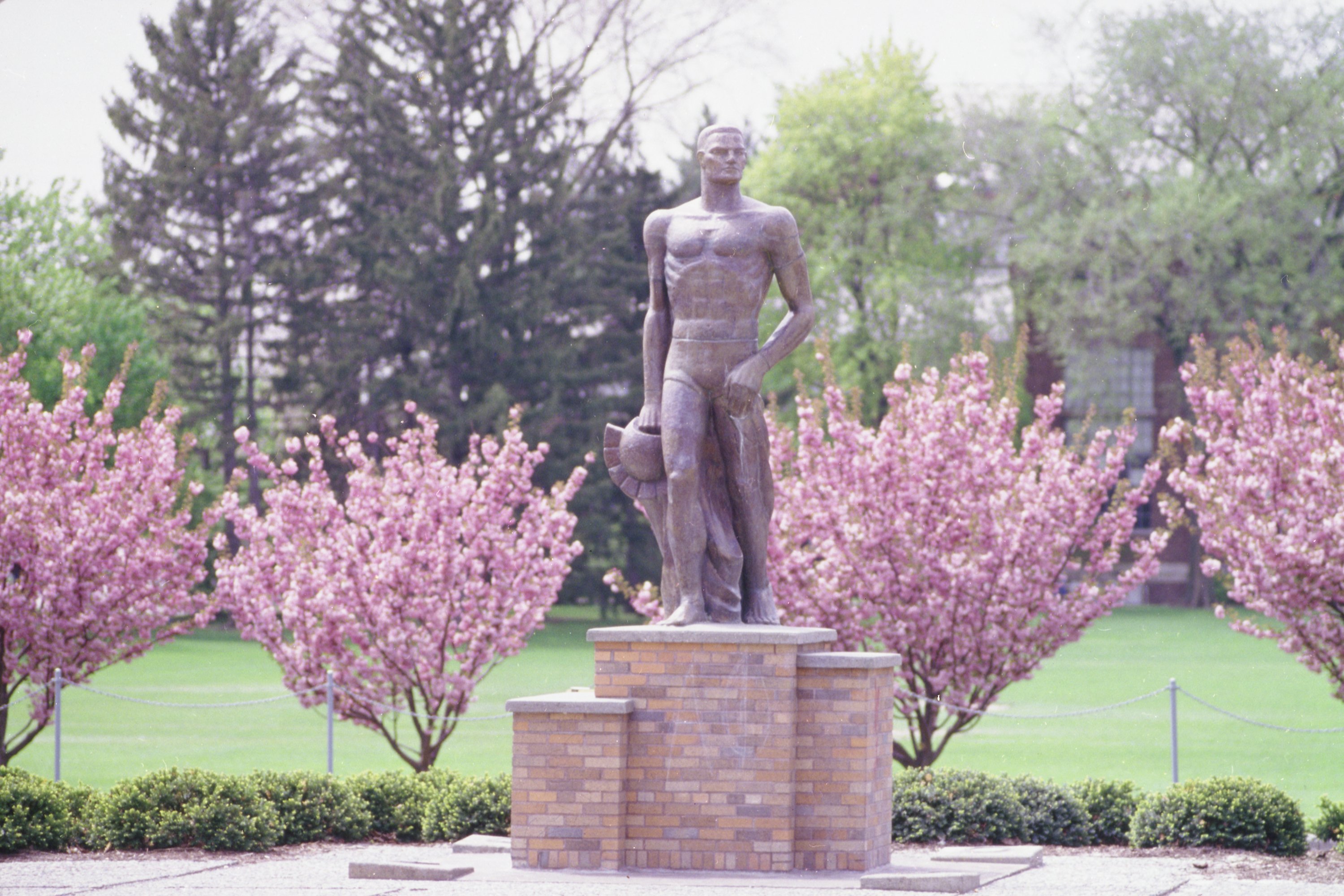Joe Sears was at work when his phone vibrated. And vibrated again. And again.
A flood of text messages and calls from his friends and fellow Spartan Marching Band members was spreading across campus.
"Sparty was attacked!"
As soon as he was able, Sears headed straight for the iconic Spartan Statue at the north end of the field in front of Demonstration Hall. He wasn't alone.
“Everyone came rushing,” Sears recalled. “The whole band was there that night.”
It’s a long-held tradition for the marching band to protect the Spartan Statue during football season in the week leading up to the game against the University of Michigan. Attacks are rare thanks to the “Sparty Watch” and its commitment to keeping vandals at bay.
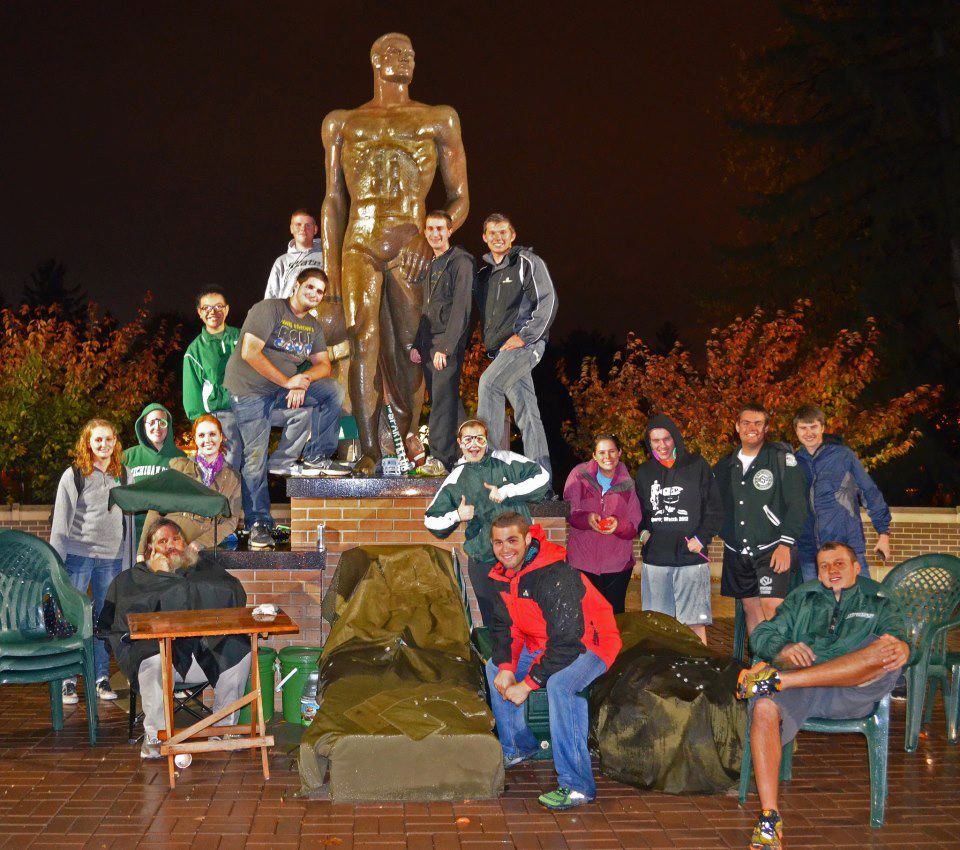
For 80 years, the Spartan Statue has been synonymous with MSU—a towering symbol of strength and pride for over half a million living alums and friends of the university worldwide. Dedicated on June 9, 1945, the statue has served as a backdrop for countless memories and traditions.
And occasionally as a target for rivals.
When Sears made his way to the statue after the attack in 2015, he was relieved to find the vandals had missed their mark. The Sparty Watch members on duty had held strong and shielded the statue from harm. In the end, the incident only served to empower Spartans across campus.
“It became even more personal,” Sears said. “You could feel it. That was the most energized I’ve seen. I remember everyone’s determination and confidence that week. We were going to go out there and show them what Michigan State means.”
Sears took part in Sparty Watch for four years and developed a deep appreciation for the statue and the university. He marched in the 2014 Rose Bowl, was a student employee with MSU Police and was the director of campus tours for the Student Alumni Foundation. The statue was a key stop on tours with prospective students.
“We had pages and pages of facts and stats, but we got to mix in our own experiences,” he said. “So, I would take them by the statue to explain some of the traditions and tell them how much it meant. It’s ingrained in us.”
It Takes Two

MSU Archives and Historical Collections
Leonard Jungwirth, a faculty member in the Department of Art, was selected by MSU President John Hannah to create the statue in 1943. Jungwirth envisioned a powerful, modern interpretation of a Spartan warrior—upright, alert and ready to defend—rather than a classical figure from antiquity.
Due to metal shortages during World War II, the statue was cast not in bronze but in terra cotta with a concrete core and a salt glaze. Standing 9 feet 7 inches tall and weighing approximately 3,000 pounds, the statue took two years to complete and debuted on a traffic island at the intersection of Kalamazoo Street and Chestnut and Red Cedar roads.
At the dedication, President Hannah lavished praise on Jungwirth’s artistic accomplishment, calling the statue “a proper exemplification of the youth and spirit of Michigan State College.”
He prophetically added: “In the years ahead, this Spartan Warrior in this beautiful and proper setting will become one of the distinguishing marks of this campus that all students and visitors will associate with this college and this campus.”
The statue faced a major restoration effort in 1988 and was rededicated on Sept. 30, 1989. The restoration was led by New York conservator Robert Pringle. Decades-long exposure to the elements had caused significant deterioration. Cracks in the façade allowed water to seep inside and expand the core. The dedicated “Save our Sparty” committee raised $75,000 for the work.
“Sparty is god,” said committee member Vince Vandenburg at the time. “He represents MSU, athletics and progress. That’s it—Sparty is MSU.”
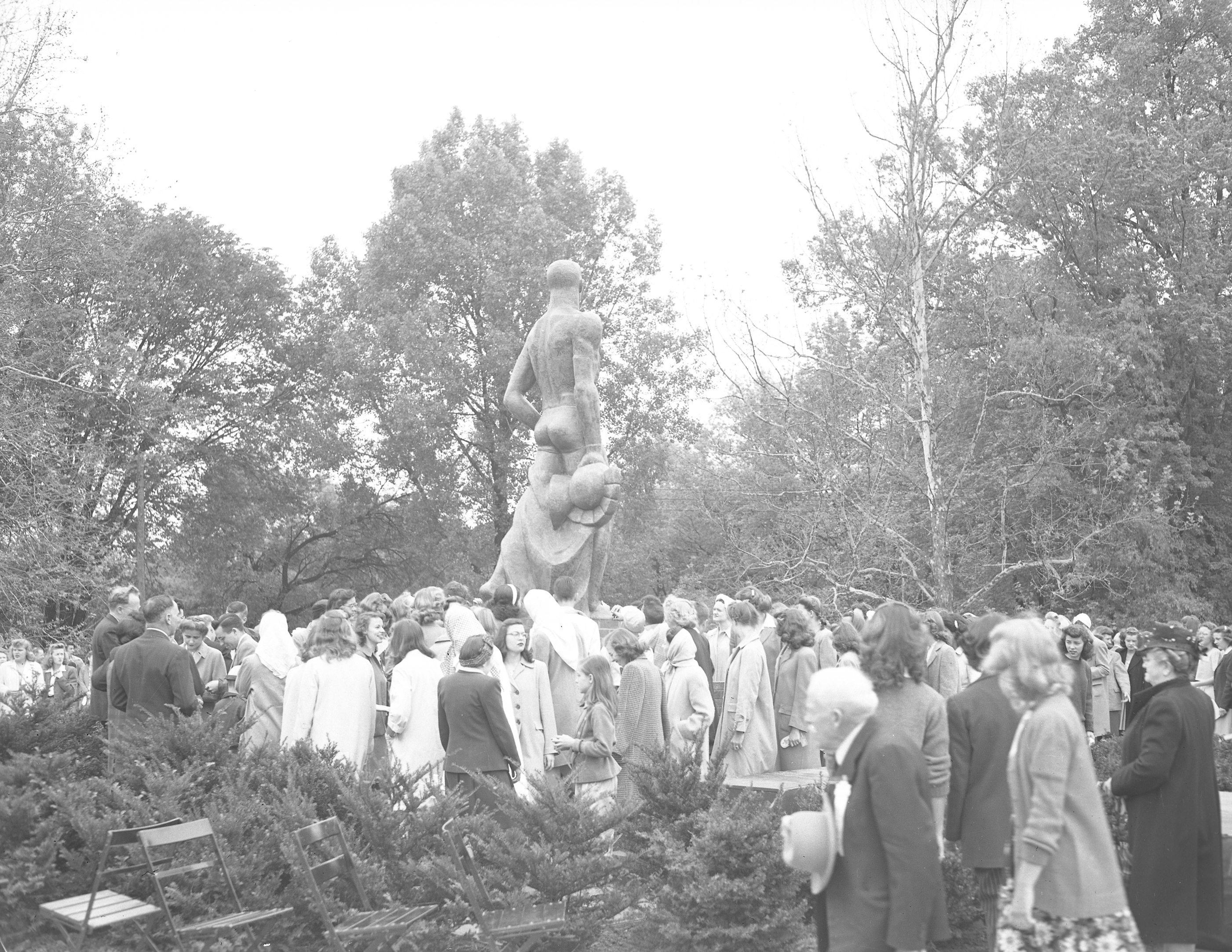
MSU Archives and Historical Collections
The statue faced another round of repairs in 1997 and 2002, led by MSU grad student Curt LaCross. Continued exposure to Michigan’s climate and repeated attacks of vandalism led to the recommendation that the statue move indoors and be replaced by a identical version made of bronze.
In a letter to the State News in 2002, one reader supported the idea by saying: “Perhaps this new Sparty can be thought of as an MSU tribute to the great WWII generation. We have all the bronze and other material goods we want, thanks to the sacrifices they made—let’s dedicate a new bronze Sparty to them.”
The project was approved in June 2004 with over $500,000 raised by donors. The bronze statue was unveiled on Aug. 25, 2005. The newly configured intersection removed the island and gave the statue its own dedicated square along the sidewalk.
The original statue moved to its new home on May 11, 2005, forever protected in the West Tower of Spartan Stadium.
“The statue represents our love for the university,” said Sears. “It’s our friends and experiences. It brings back those good memories that will last forever. It became so much more. Whenever I see the statue, it’s a great reminder of the time I spent at MSU.”
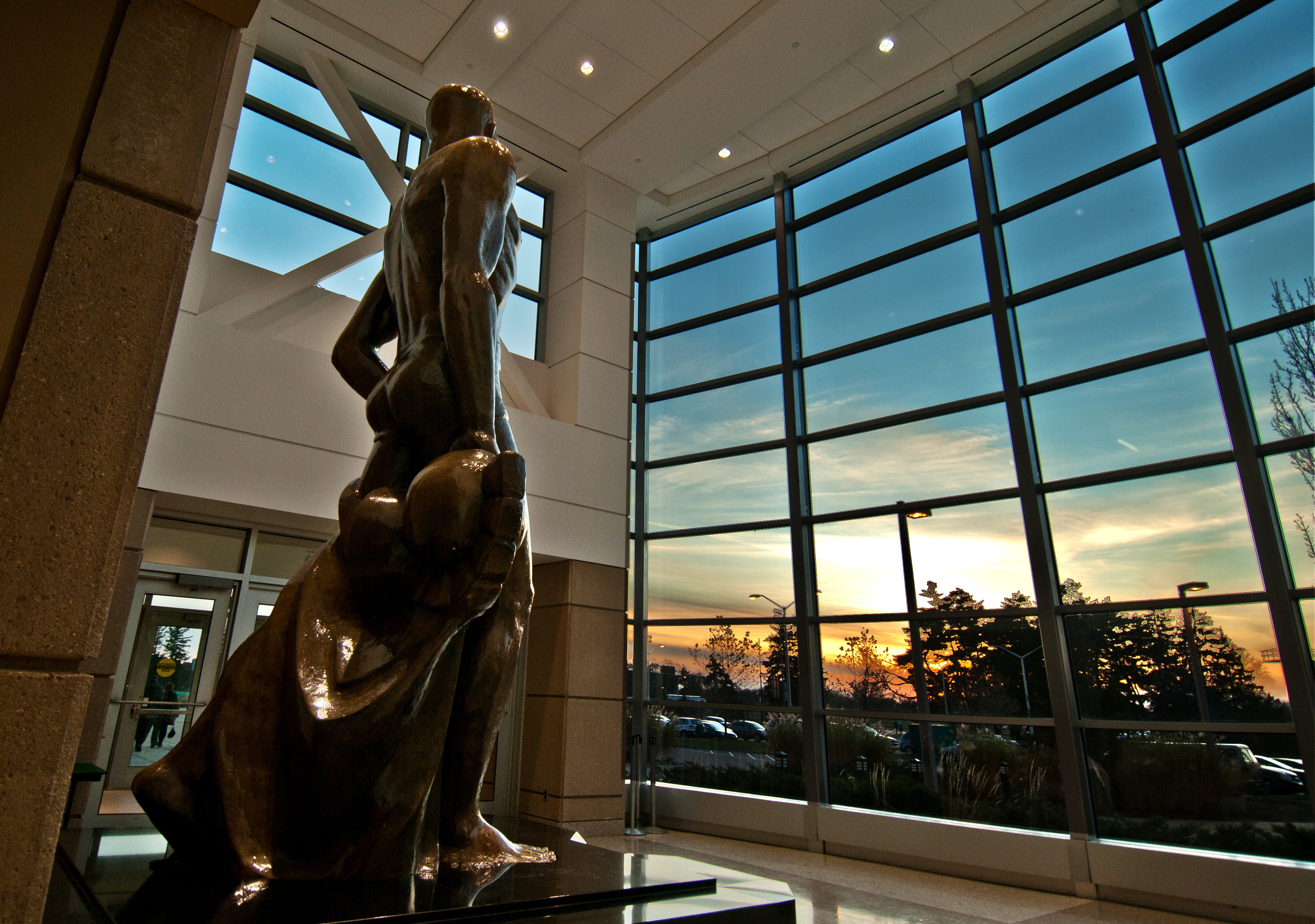
Behind the Bronze
The new Spartan Statue has thrived as it heads toward its 20th anniversary later this year.
The statue is cared for by the Landscape Services team at MSU’s Infrastructure Planning and Facilities (IPF). Twice a year—once before winter and again ahead of spring graduation—the IPF’s hard surface team completes head-to-toe maintenance on the statue with a calcium-based bronze cleaner and protective wax.
“It’s holding up really well. We’ve had very few issues,” said Jeremiah Saier, a GIS analyst with Landscape Services. “It’s an iconic thing. The place its located—with the backdrop of Dem Hall, the crabapples behind it and the road that leads up to it—it’s the focal point of our landscape. It’s very rare. I’ve visited a lot of other Big Ten universities and no one has anything like it.”
For nearly two decades, the statue was under the care of Kim Consavage, who headed the hard surfaces team when the new statue was first created in 2005. She received the 2018-19 Jack Breslin Distinguished Staff Award for her passion and dedication to the university.
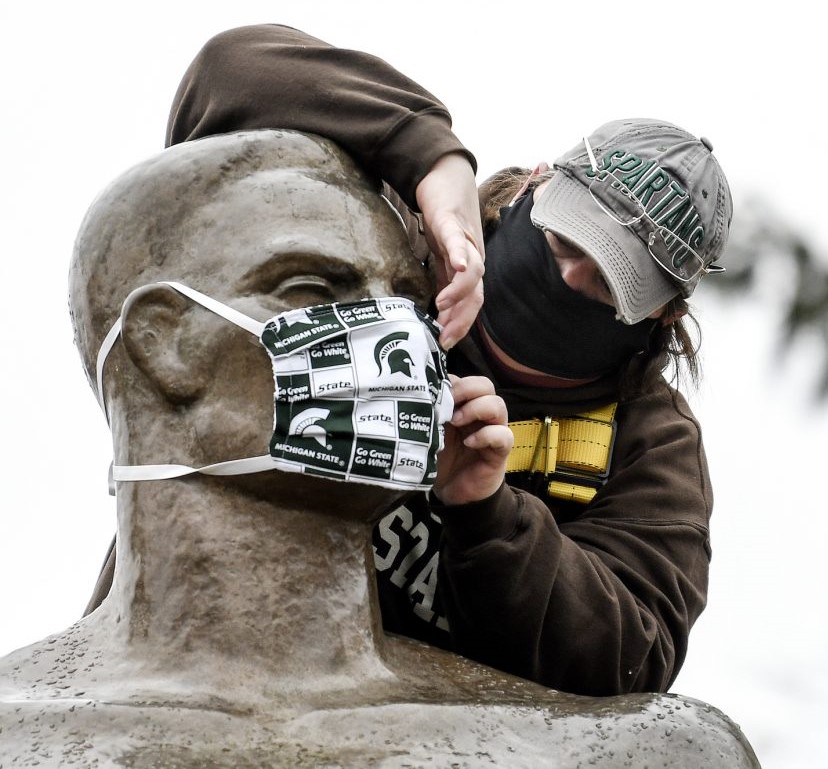
“I wanted to take it upon myself to take on that role, to take care of him,” Consavage said. “Still every time I drive by, I’m always checking on him. I take it personally. He was kind of like my baby.”
Consavage retired in 2022 after a 35-year career at MSU. She recalls the 2015 attack on the statue but laments being away on vacation during the incident. “There was paint everywhere,” she said. “It took them all day to clean it up.”
For Consavage, the Spartan Statue represents nothing less than university itself.
“It’s strength and pride,” she said. “He stands there proud, overlooking campus, bringing the community together. It’s the center of campus. When anyone thinks of MSU, you think of Sparty.”

